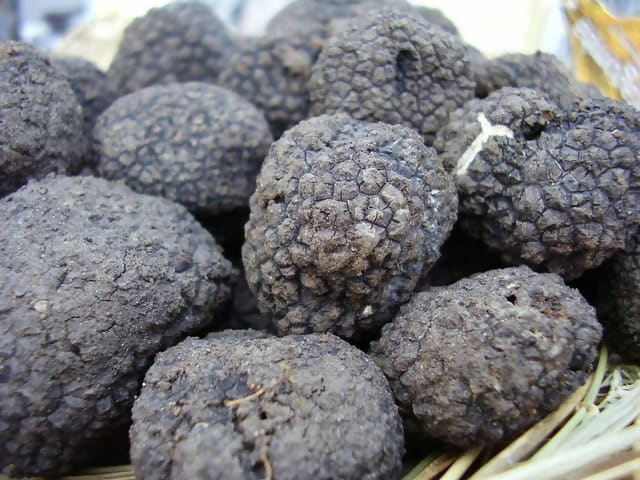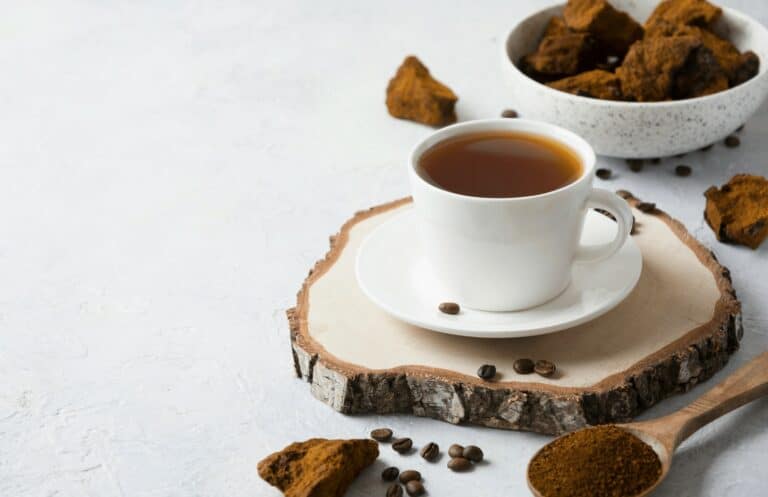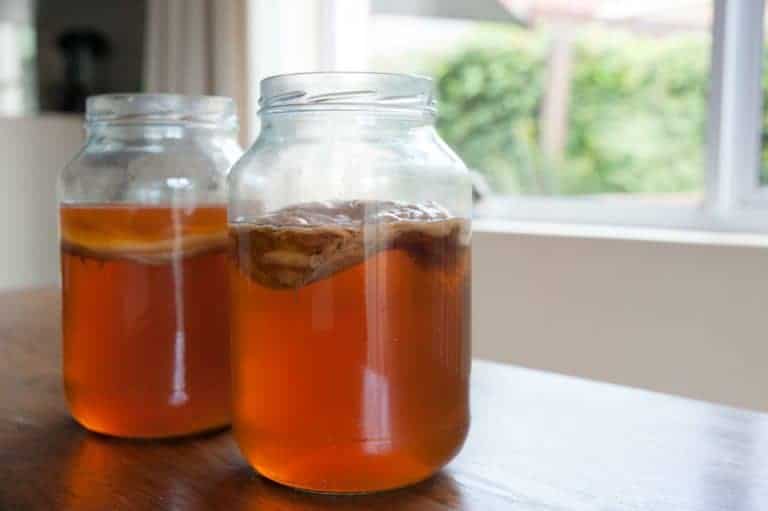Clearing Up the Kombucha Confusion: Yes it is Good for You!

This fizzy, vinegary, fermented tea has become widespread in workplaces, trendy cafes, and grocery stores across America. While known and consumed for centuries, the recent resurgence of this tangy, delicious drink has led it to homebrews across the world and increasingly more studies and writing on its health benefits.
This article will take a deep-dive into the world of Kombucha. We will explore questions such as: Where did this trending tea come from? How do you make it, and what in the world is that beige, slimy blob that creates it? And especially, does it have promising health benefits? Science is increasingly saying yes on the last one.
The Kombucha Mushroom
Kombucha is sometimes referred to as Kombucha Mushroom Tea, reflecting its historical roots. Although partly misleading, the tea is indeed formed by fungal species, but working alongside bacterial neighbors. The Kombucha “mushroom” is a symbiotic culture of bacteria and yeast, or SCOBY. The SCOBY is a gelatinous, layered pancake that looks like the cap of a mushroom. It ranges in color from almost white to brown and all shades in between.
The mass is the host colony, or mother culture, of the microorganisms that bring on the fermentation process when combined with sweetened tea in the right conditions. The yeast converts the added sugar into alcohol, and the bacteria convert the alcohol into organic acids such as acetic acid. A symbiotic relationship is formed when the bacteria, with the alcoholic fuel provided by the yeast, weave the living quarters using the insoluble fiber cellulose. Cellulose makes up the bulk of the biomass of the SCOBY.
The Origins of Kombucha Tea
The origins of Kombucha are part myth and part mystery, with different countries in the Far East having their own unique creation stories. What we do know is that it was originally produced in parts of China, as early as 221 BC during the Tsin Dynasty. It was here that the drink was known, not all too hyperbolically, as the “Tea of Immortality”. The tea was similarly being created and consumed in Eastern Europe (what is now Russia) and Japan around that time.
In fact, the word Kombucha is derived from Japanese. As folklore has it, in 414 CE a Korean physician named Kombu treated the Emperor Inyko with the tea for his digestive issues and so it took after his name, combining “Kombu” and “cha,” meaning tea. Fast-forwarding several centuries, it is believed that Kombucha was spread to parts of Western Europe following World War I, where it was brought home by German POWs who were held captive in Russia.
The drink didn’t truly go mainstream in the United States until the 1990s in Los Angeles, where it had its first real commercial success. With the growing interest in functional foods and probiotics, Kombucha supporters increasingly rallied behind its purported benefits, claiming it treats everything from stress and gastrointestinal issues to infections, AIDS, diabetes, and cancer. In recent times, Kombucha has experienced an impressive spike in sales, grossing over $1.5 billion in 2017.
The Unique Taste of Kombucha
It’s difficult to nail the flavor of Kombucha, and most descriptions likely won’t make anybody want to run out to try it for themselves. As a carbonated, tart and acidic drink, it is something like a cross between a slightly sweet, sparkling apple cider vinegar and champagne. Or perhaps, a sour ginger ale that is flavored by sweetened black or green tea. The sweet, tangy flavor is a great substitute as far as your tastebuds are concerned for both sugary commercial drinks and bubbly alcoholic beverages.
While the taste of Kombucha can be polarizing, those who aren’t fans can reap the many benefits of Kombucha with Kombucha supplements. These supplements, such as the Vitamin Code Raw Kombucha, include all of the health-supporting attributes that the brewed tea offers, including B vitamins, probiotics, digestive enzymes, and polyphenols, delivered in an efficient, sugar-free pill form.
The Nutritional Content of Kombucha
Due to the fermentation process wherein the yeast eats up nearly 90% of the sugar in the tea, Kombucha sports a low-carb, low-sugar nutritional profile that contributes to its health and weight loss potential. An eight-ounce glass contains 30 calories and anywhere from 3-7 grams of sugar depending on the brew time. There is less than a gram of fat and nearly 3 grams of protein per cup of Kombucha.
Kombucha contains small amounts of vitamins and minerals that are made when the yeast breaks down the sugars. This includes vitamins B1, B2, B3, B6, B9, and B12, as well as Vitamin C. Flavored Kombuchas, especially with citrus and berries, provides even more micronutrients and antioxidants. While the tea itself has no fiber, the SCOBY is a great source of insoluble fiber, being mostly made of cellulose. 100g of SCOBY is 18% protein and 12% fiber by weight.
Ingesting synbiotics, or a mixture of prebiotics and probiotics, is a great way to take the beneficial effects of probiotic-containing foods like Kombucha to the next level. Prebiotics are dietary fibers that feed the friendly bacteria in the gut. This is the optimal combination to allow the beneficial microorganisms to thrive once ingested. Other great prebiotic sources to supplement alongside the probiotic boost of Kombucha tea are acacia gum, bananas, chicory root, wheat bran, flaxseed, and burdock root, to name a few.
Even though the SCOBY contains bacteria that feed on the alcohol produced by the yeast, you are still left with trace amounts of alcohol. In commercial products, this is usually less than 0.5% to avoid being mandated as an alcoholic beverage, but some homebrews can result in Kombucha as high as 3% alcohol.
Kombucha is also a great option for vegans, those with lactose intolerance, and gluten sensitivities. Kombucha does not contain any gluten, dairy, or animal products, and may also be beneficial to those with diabetes if the more sugary varieties are avoided.
For diabetic diets, low-sugar Kombucha varieties are a great and healthy addition. As an added bonus, Kombucha tea was found in rat studies to inhibit alpha-amylase and lipase activities, giving it liver, kidney, and pancreas-protecting attributes that facilitate blood sugar and cholesterol stabilization.
The Surprising Health Benefits of Kombucha
The health benefits of Kombucha are largely attributed to bioactive compounds that act synergistically. Several species of bacteria, including those belonging to the genus Acetobacter, and Gluconobacter, as well as yeasts of the genus Saccharomyces along with glucuronic acid, contribute to the drink’s health-promoting attributes.
Since Kombucha is brewed from tea, it is packed full of polyphenols, antioxidant compounds that protect our cells from oxidative stress induced by free radicals. Left unchecked, these molecules can damage our cells and lead to cancer, heart disease, and other conditions. When Kombucha is prepared from green tea, green tea catechins such as EGCG are also present, which are known to be cardioprotective, neuroprotective, anti-carcinogenic, cholesterol and blood pressure-lowering, fat burning, and more. The fermentation process is known to further increase the amount of these disease-fighting polyphenols.
Many of the studies backing the health benefits of Kombucha have been conducted in animal and cell culture models with limited translational findings. More clinical trials with human models are still needed to confirm the comprehensive list of beneficial health effects found in Kombucha, but below are some well-supported health benefits associated with the tea.
Detoxification. The enzymes and organic acids present in Kombucha are believed to support systemic detoxification. Kombucha has been speculated to aid detoxification through the organic acid glucuronic acid and its main bioactive saccharolacton. These have been shown to increase glucuronidation in the body, which is involved in eliminating some drugs and toxins from the body. In rodent models, Kombucha appears beneficial in reducing liver toxicity. This is thought to be because of oxidative mechanisms or glucuronidation of toxins. Additionally, glucuronic acid can also be processed into glucosamine in the body, which is well-known to support joint and cartilage health. Acetic acid and other organic acids present in Kombucha also possess antibacterial activity, balancing the gut microbiome and preventing the drink from getting contaminated by harmful pathogenic bacteria.
Improved digestion. The organic acids, polyphenols, enzymes, and probiotics may promote a healthy digestive system and soothe an upset stomach. Specifically, the lactic acid bacteria present in Kombucha cultures are credited with alleviating the symptoms of IBS and other gastrointestinal conditions such as constipation or diarrhea. It can also help prevent candida overgrowth by restoring balance within the digestive system. S. boulardii, a probiotic strain found in Kombucha, is able to effectively compete with and displace Candida within the gut.
Improved immunity. Kombucha is packed full of beneficial microbes that can balance our microbiome. If the probiotics in the Kombucha survive and proliferate in the gut and large intestine, the improved gut health can transfer over to improved immunity. Healthy gut flora play a key role in protection against invading pathogens as well as immune system regulation through its interaction with pro or anti-inflammatory responses.
Cancer Prevention. Kombucha tea has been claimed to have anti-cancer properties by kombucha drinkers for decades. The anticancer properties of the tea are likely mediated by tea polyphenols present before fermentation. Polyphenols are widely accepted to inhibit gene mutation, inhibit cancer cell proliferation, induce cancer cell death, and terminate metastasis. Kombucha also contains isorhamnetin, a metabolite of quercetin, which has been associated with longevity and anticancer properties.
Improved mood. The gut is often referred to as the “second brain” and is the location of the network of neurons that constitute the enteric nervous system. With nearly 95% of your serotonin produced in the gastrointestinal tract, having a well-balanced, healthy gut microbiome not only helps with food digestion but also emotion regulation. Recent studies have shown that the gut microbiome can communicate with the central nervous system through the blood-brain barrier, substantiating the claim that emotional and cognitive centers of the brain bidirectionally communicate with peripheral intestinal functions through the gut-brain axis. Additionally, Kombucha contains amino acids, methylxanthine alkaloids (caffeine, theophylline, and theobromine), ascorbic acid (Vitamin C), and B-complex vitamins that are all requirements of a healthy, well-functioning nervous system.
Improved skin health. Kombucha has also been used extensively in beauty care, with beneficial effects ranging from retaining the natural color of hair, keeping the skin clear, firm, and smooth, and healing skin wounds and disorders. Being the main source of the probiotics and organic acid byproducts, the SCOBY is particularly useful when harnessing Kombucha’s skin care potential.
The Variety of Kombucha Products
- Jun Tea. Often referred to as kombucha champagne, Jun Tea is a similar drink made with green tea and honey. Jun Tea uses less sweetener and tea compared to kombucha tea and contains all of the beneficial polyphenols found in green tea. Is a bit more involved to brew compared to kombucha tea, but Kombucha Kamp, a well-trusted source, offers kits and starter cultures to get started.
- Kombucha Yogurt. Kombucha can be used to ferment 2% dairy milk to make tasty kombucha yogurt. The milk fermentation is much quicker than tea fermentation, taking only six to seven hours to get a good yogurt according to one reputable source. When yeast ferment lactose (the sugar found in milk), there is little to no alcohol is produced, which may be a great option for those who can’t ingest alcohol for health reasons.
- Beer. Another popular option to consume kombucha beer. It is an amalgam of kombucha, dried hops, raw ginger root, and other fruits and rinds. High-alcohol, or sometimes, “hard” kombuchas can have up to 5% alcohol content and may be a healthier, gluten-free option compared to regular beers. Many craft breweries throughout the U.S. are collaborating with kombucha companies to offer a variety of kombucha beer on tap. Unity Vibration Kombucha also offers bottled kombucha beer, such as the 8 ABV Triple-Goddess K.P.A, which flaunts a tart, earthy, and peachy flavor.
- Tea. Of course, the most well-known and popular Kombucha product, Kombucha tea is widely available in grocery stores. It can easily be brewed in seven to ten days by adding a mother culture of yeast and bacteria to cooled sweetened black or green tea. Kombucha prepared from black tea is very common and recommended for amateur brewers. It gives a strong apple-y taste and a nice amber color. Oolong tea can also be used to feed the SCOBY, making a fruity amber and light, grassy-colored Kombucha. Green tea Kombucha maximizes the health benefits of the tea and is characterized by a delicate taste and light green color. In all cases, using organic, pure and true tea leaves makes for the best possible kombucha brew.
It is not recommended to use teas with essential oils, like Earl Gray, which may upset the mother culture. Smoked teas like Lasang Suchong make off-tasting kombucha and are also best avoided. Herbal teas may be used alongside the recommended teas above, and are best used for flavoring since they don’t adequately fuel the SCOBY by themselves.
How Much Kombucha Can You Safely Drink?
It’s not clear how much is too much. According to some medical practitioners, 4-8 ounces is the recommended daily intake of fresh, high-quality Kombucha tea for an adult. If you are sensitive to probiotic-containing foods or haven’t tried Kombucha before, consider drinking Kombucha in smaller doses to see how your body responds.
As with any probiotic-containing food, listening to your body and doing what works for you is the golden rule. While some people report no problems drinking sixteen ounces in a single sitting, others may have uncomfortable bloating or GI distress.
In general, Kombucha is very safe to drink when brewed under sterile conditions. Improper sanitation and too long of a fermentation period can lead to contamination with pathological bacteria or mold, which could lead to toxic health effects. Kombucha is generally not recommended for people that are pregnant, breastfeeding, or have compromised immune systems.
There have been a few reported cases of liver damage and metabolic acidosis in people who consumed large amounts, but a clear causal link hasn’t been established. Although a typical Kombucha bottle is sixteen ounces, it is recommended to consume smaller servings before meals. This maximizes the chance of probiotic survival and prevents uncomfortable bloating or GI distress that may occur in some individuals when all servings are consumed at once.
The Side Effects of Kombucha
Reported adverse effects range from mild stomach upset and nausea to infections, acidosis, and allergic reactions. Kombucha tea that is brewed under non-sterile conditions can result in these reactions, as contamination is more likely. Long fermentation times can make an overly acidic brew that can also cause adverse GI effects, or more rarely, acidosis. Those with gastritis, heartburn, or recurring ulcers should consider consuming Kombucha under medical supervision.
In rare cases, lead poisoning has occurred when improperly manufactured ceramic pots were used for homebrewing. The lead content leeched into the brew by the acids in the tea.
To minimize the risk of side effects, drink commercially prepared Kombucha which ensures high brew standards or, if drinking homebrewed Kombucha, be sure that the tea is created with high-quality ingredients and in a sterile and well-ventilated environment.
Making Kombucha At Home
If you’ve been bitten by the Kombucha bug, you may be interested in brewing your own Kombucha as a more fun, flexible and cost-effective option. Two or three 16-oz Kombuchas per week may total up to 250-550 dollars per year. If homebrewing, the cost of the four fundamental ingredients (tea, sugar, water, and culture) may cost as little as 20-30 dollars per year to make the same amount. Not to mention, the SCOBY will continually reproduce and provide a (theoretically) lifetime supply of mother culture for brewing, eating, or gifting.
Many high-quality commercial starter kits found online can make up to a gallon of Kombucha (eight bottles worth) for a fraction of the cost of commercial brands, which easily run at over three dollars per 16-ounce bottle.
To get started at brewing, four fundamental ingredients are required: a healthy SCOBY immersed in some starter liquid, (or Kombucha starter culture, which is really the heart of the fermentation process), sugar, tea, and water. The better quality the ingredients, the better quality the brew. Opt for unfluoridated, unchlorinated water, spring water is a great option. Use organic white sugar or cane sugar, and organic black or green tea. Black tea is the recommended tea for first brewers, but green or oolong tea will also work to feed the SCOBY.
A one gallon, wide-mouthed glass jar is a great choice to ferment the mixture in. A tightly woven cloth, often cheesecloth or cotton, is firmly placed over the lid and secured with a rubber band to keep unwanted contaminants out (such as fruit flies) while allowing oxygen flow to let the SCOBY thrive.
A comprehensive starter kit such as this one will contain all of these items, plus other useful items such as a temperature strip, pH litmus paper, and a funnel for liquid transfers when bottling. This is a reliable source with consistently high reviews and fresh, great SCOBYs.
More scaled-up continuous brew commercial kits also exist such as this kombucha on tap brew kit, perfect for any serious Kombucha drinker, larger household, or smaller workplace. These continuous brewing systems allow you to always draw from your tap and enjoy day-to-day.
Sugar-Free Kombucha
The sugar content in Kombucha may be a concern for some on a diet or when maintaining a more active, calorically-restrictive lifestyle. The standard Kombucha brew recipe calls for approximately 1 cup of sugar per gallon of kombucha. Since sugar is the fuel source for the cultures within the mother culture, it isn’t possible to brew with absolutely no sugar, but you can brew with less sugar if desired. It’s important to note that the vast majority of the sugar, up to 90%, is consumed by the yeast during the fermentation process.
The longer the fermentation times, the less sugar content the Kombucha will have. Kombucha vinegar will be the end result of a very mature brew, which sports very little sugar. One major source of sugar in Kombucha is the flavoring, so sticking to herbal flavorings, or opting for unflavored Kombucha (or original flavors in commercial products) will reduce the sugar load to a mere 1-2g per eight-ounce serving.
Many quality sugar types can be used in the fermentation process, including organic white sugar, evaporated cane juice, brown sugar, honey, and agave (when combined with another glucose-containing sugar).
A Kombucha Recipe to Get Started
While room for creativity in Kombucha brewing is virtually limitless, this basic infographic is all you need to get started with a basic Kombucha brew.

Here are some interesting and tasty recipes to flavor your Kombucha once the basic fermentation is complete.
- Beet Kombucha. The earthy and sweet flavor of the Beets meshes very well with the sweet tanginess of the kombucha tea. When combined with rosemary, lemon, or ginger, this great looking kombucha is truly unparalleled.

- Root Beer Kombucha. This flavor is a great, healthy alternative to regular root beer. The recipe calls for more sugar and root beer extract (which contains sassafras bark). Quality root beer flavoring packs can be purchased here to easily make this delicious recipe.

How to Store Kombucha
Unless you are using a continuous brew system, after fermenting the kombucha between 75-85F, the next step is bottling. It is useful here to have a funnel to pour from the fermentation jar into individual bottles. Before funneling, remove the SCOBY with your hands or a plastic utensil and replace into a new fermentation jar with 0.5 to 1 cups of starter liquid or into your existing SCOBY hotel. You can pour directly into the bottles from the fermentation jar, leaving approximately 1” of headspace on each bottle to allow for carbonation buildup.
Bottles made with carbonation in mind, such as spare commercial bottles (cleaned out thoroughly with white vinegar) or, my personal favorite, sixteen-ounce flip-top bottles are great options. Like the fermentation jar, It’s highly recommended to use clear glass only so that you observe the cultures and appearance once bottled. Some yeast tangles and other sediments may be evident on inspection. This is completely normal and harmless, but if desired, the brew can be filtered through cheesecloth or a sieve to remove them.
Plastic containers, such as clean soft drink bottles, may also work to store the kombucha if they have secured tops. Plastic, even food-grade plastic, is not as desirable as glass bottles because they are more vulnerable to damage and they often contain chemicals that may leech into the tea. After bottling, the Kombucha can be stored in the fridge and will last for up to three months.
If you want to increase the carbonation for an extra fizzy drink, you can do a secondary fermentation (F2) in the bottle. To do this, you bottle normally, but instead of placing in the refrigerator, let the Kombucha sit out for two to three days in a warm, dark place. This will let the active cultures build up the fizz more quickly, but it is again important to make sure the bottles are built for carbonated drinks to avoid any exploding kombucha accidents in the pantry. If you want to be safe, you can always store the F2 bottles in an empty cooler with the lid on or in an empty garbage bag, giving it a nice dark environment while also giving peace of mind.
The Best Commercial Kombucha Products
Compared to homebrews, commercial products usually have fewer varieties of bacteria and yeast because the fermentation process is halted early to prevent continued carbonation for safe transport. However, quality commercial Kombuchas still flaunts many of the health benefits with the healthy nutritional profile, organic acids, and a dozen or more healthy probiotic species. Most commercial Kombuchas will be found with less than 0.5% alcohol to avoid being classified as an alcoholic beverage.
When purchasing Kombucha, look for raw, organic Kombucha that is unpasteurized. The pasteurization process will kill the beneficial microorganisms that give the tea many of its proposed health benefits. These active culture Kombuchas are kept in the cold section of the grocery store, usually near fresh-squeezed juices and other products.
Kombucha can be an excellent replacement for sugary soft drinks or commercial sports drinks, but be on the lookout for sugary commercial Kombuchas that may not be the best addition to a healthy lifestyle or weight loss regimen. If you’re looking for a low-sugar Kombucha, it may be best to avoid brands such as Kombucha Wonder Drink, O Organics, and Unity Vibration which all contain over 20g of sugar per bottle.
Just like yogurt, there are many Kombucha products to choose from, but these brands are especially trusted, well-sourced, and great tasting.
- GT’s Living Foods has been in the Kombucha making business for over 20 years. Started by GT Dave, they offer small-batched, raw, organic, naturally effervescent kombucha that is available in pretty much any store that sells Kombucha. Each bottle contains over 2 billion live cultures with no artificial ingredients or preservatives. Their great flavors include Original, Ginger Ade, Guava Goodness, Gingerberry, Trilogy, and much more.
- Health-Ade kombuchas are another great commercial choice. They are certified organic and offer simplistic, no-fuss, bold vegetable and fruit flavors such as Cherry-Berry, Pink Lady Apple, Ginger Lemon, and Pomegranate.
- Kevita offers slightly carbonated, refreshing, and sweet Kombuchas. The company uses all organic ingredients along with a controlled brew technology to provide consistent, stable, and vibrant microbial activity in their teas. With flavors such as Pineapple Peach you can’t go wrong with this refreshing and healthy treat. So good!
- Brew Dr. Kombucha, established in 2006, provides milder, artisan tea drinks that taste like a hybrid between premium tea and weak Kombucha. The company uses top-shelf tea from Townsend’s Tea Company. They are refreshing, mildly sweet, and very palatable for novice kombucha drinkers. Some great flavors include Clear Mind, Mint Lemonade, Love, Ginger Turmeric, and Superberry.






